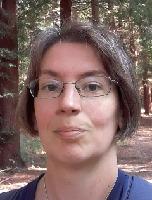Helen Dafter is Archivist at The Postal Museum in the UK
Readers of this blog will be well aware of the three legged stool of digital preservation. One key element of this stool is staff skills. For some time I have been concerned that digital preservation skills at The Postal Museum are concentrated in one member of staff (myself). This is undesirable in terms of both organisational and individual resilience.
Having spent several years developing my understanding of digital preservation and building workflows to manage our existing holdings I felt it was time to start sharing this knowledge more widely. This led me to decide to run some internal training for colleagues. As well as building understanding of the issues surrounding digital preservation I also wanted to use these sessions for advocacy – developing an appreciation of the importance of this activity and the work involved.
I developed two types of training with different audiences. The first was aimed at collections staff. This included archivists, curators, conservators, and digitisation staff. Many of these had already done Novice to Know How and my training was intended to build on this and apply it within the context of The Postal Museum. The training consisted of three sessions each building on knowledge from the previous session. The first session looked at why digital preservation is important and how we get material into the collection. The second session was the most practically focussed and discussed what we do with digital material once we receive it. This session also involved demos of the various tools, such as Exactfile, Teracopy, and DROID, used to process digital material. The final session looked at caring for digital material in the longer term. The training took the form of PowerPoint presentations. To maximise opportunities to get involved the each session was run twice, there were options to attend in person or online, and sessions were recorded. I also appreciate how much digital preservation is a ‘learning by doing’ activity and there are limits to how much PowerPoint presentations can embed this learning. I therefore put together a folder of copies of some typical digital records received by the archive. These records were selected to avoid any confidentially issues and I encouraged colleagues to test the tools I had demonstrated using this test corpus. These copies will be deleted in six months to avoid duplication. Prior to each session I circulated links to supporting resources – some internal policies and processes and some external sources such as the DPC Handbook.
Alongside this I developed more generic training which was aimed at the wider The Postal Museum staff. This was a single session intended to give colleagues a foundational understanding of digital preservation and how it relates to their work. This session included a definition of common terms such as digital preservation, digitisation, and records management and how these relate to each other. It also examined high profile instances of digital loss such as the Universal Music fire, Toy Story 2, Ground Zero photographs, and Flickr deleting user photographs. I discussed how content is more important than format when determining collection policies and illustrated this using our collection of press cuttings. These records begin in the late 1800s when cuttings were pasted into large volumes, by the 1990s photocopied cuttings were collated and printed for circulation, before digital circulation (initially as PDFs and then as email content) in the 2000s. Having physical archives in the room to show alongside their digital equivalents really helped make the subject more relatable. I then explored the potentially uses of digital collections before concluding with a brief discussion of financial and environmental sustainability. This training also ran twice, with onsite and online options, and was recorded.
Overall this training was well received and has raised awareness of the issues around digital preservation across the organisation. It was the first time I had delivered training of this nature and I certainly learnt a lot along the way. The biggest issue was logistical – while the hybrid approach maximised opportunities for staff involvement it did involve a lot juggling around the availability of meeting rooms and technology. If I was running the sessions again I would probably space out two strands more – all the sessions took place within a 3 weeks period (a total of eight training sessions in that time, plus preparation and quality assuring the recordings) which was quite intense. In terms of content the second collections focussed session which explored tools and processes may have been a little overwhelming for some colleagues. Rather than building their digital confidence there is a risk that it made the whole process more daunting. On the other hand, it did highlight exactly how much work is involved in the existing processes which could support the case for a digital preservation system. To fully share the work of processing new transfers I need to update our inhouse processes to include step by step guides for each tool and provide more targeted training at an individual level. I was really impressed with the attendance and level of interest I had in the sessions aimed at the wider staff and these were really useful at bringing together different teams from across the organisation. The breadth of staff attending these sessions did make it slightly more challenging in terms of relating the content to their roles. In future I might consider whether it would be more appropriate to tailor different sessions to Exec, Front of House etc. There are benefits to both approaches – opening training to all staff helps break down some internal silos but the training may be less relevant.
The main take away is that any effort to share load often involves more work in the short term. The challenge as ever is finding the time to invest today to reap the rewards tomorrow.
This training was tailored for The Postal Museum but I am happy to share my presentations and resources. Do contact me helen.dafter[at]postalmuseum.org.













































































































































